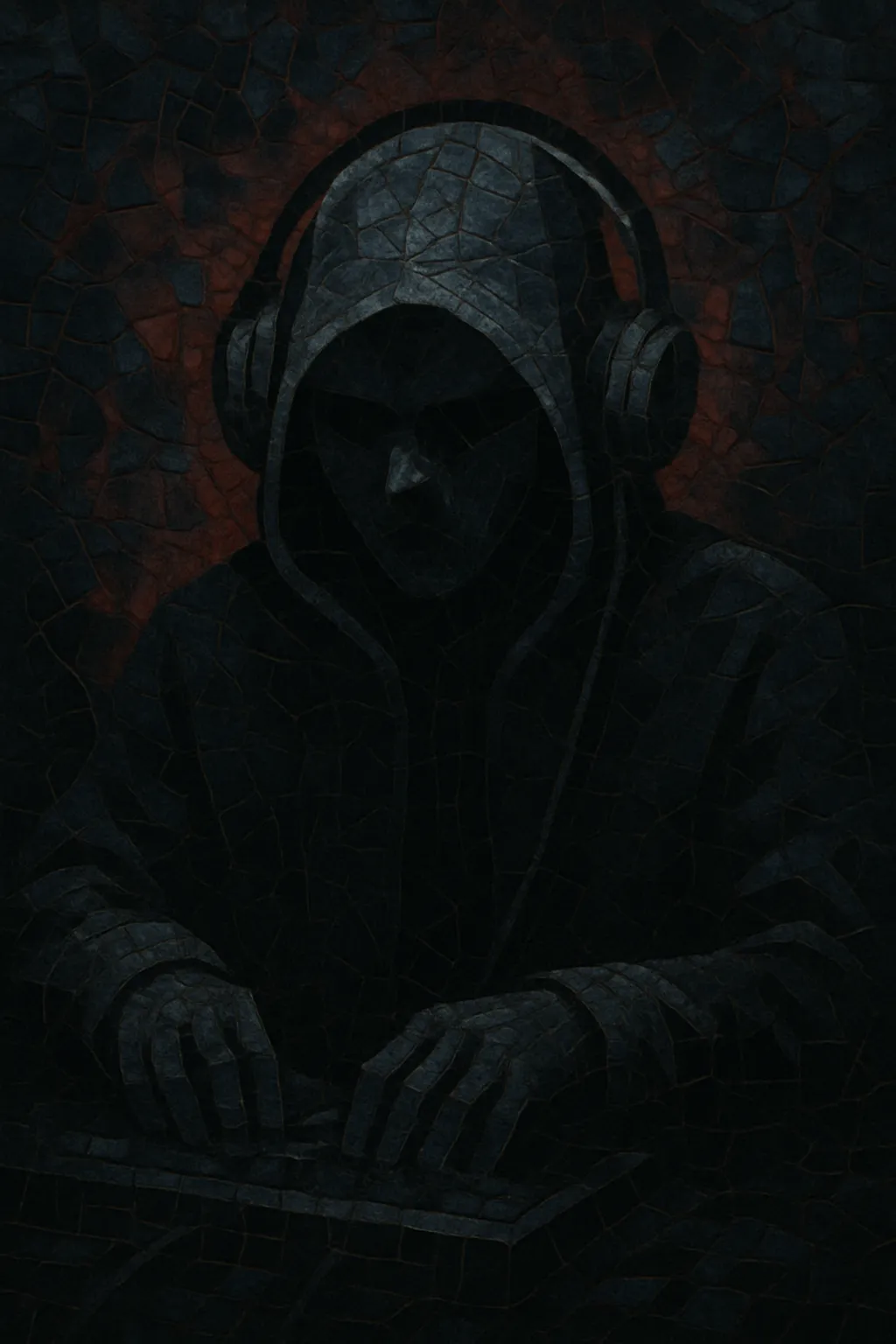Dark electro is a grim, minor-key branch of EBM and electro‑industrial that foregrounds ominous atmospheres, horror‑tinged sampling, distorted or whispered vocals, and tightly sequenced basslines. Compared with classic EBM, it is colder, more cinematic, and more psychologically intense, often evoking dystopia, body horror, and inner turmoil.
The style typically runs between medium and club tempos, uses stark drum‑machine patterns, dissonant stabs, and evolving arpeggios, and layers foley/samples to create a claustrophobic soundstage. Production favors saturation, bit‑crushing, and dynamic filtering over glossy sheen, keeping the mix dark, dry, and immediate.
Dark electro crystallized in the late 1980s in German‑speaking Europe, drawing directly from EBM’s body‑music pulse and the experimental edge of electro‑industrial pioneered by Canadian and Belgian acts. Early artists pushed EBM’s stark minimalism toward more cinematic dread: minor keys, horror film samples, and heavily processed vocals became signatures.
The early–mid 1990s saw the style cohere around German and Belgian labels and club circuits. Acts such as yelworC, Placebo Effect, :Wumpscut:, Suicide Commando, and Leaether Strip defined the sound—sequenced, ice‑cold basslines; harsh yet intelligible vocals; and dense atmospherics. Labels like Zoth Ommog, Off Beat, and Celtic Circle were crucial hubs, while club nights and compilations spread the aesthetic across Europe and North America.
In the 2000s, a more aggressive strain (often dubbed hellektro/harsh EBM) pushed distortion, tempo, and vocal extremity further, with acts like Hocico and contemporaries channeling dark electro’s template into a more combative club form. Parallel scenes (rhythmic noise/power noise, industrial techno) borrowed its martial rhythms and bleak atmospheres, while some legacy artists incorporated denser sound design and modern production.
A revivalist wave (“new dark electro”) emphasized classic sequencing and mood with contemporary mixing, as newer producers revisited 1990s techniques—tight bass arps, careful sample design, and focused songcraft. The genre remains a staple in goth/industrial club culture and continues to influence adjacent styles (witch house, industrial techno, and post‑industrial hybrids) through its sound design language and thematic palette.


